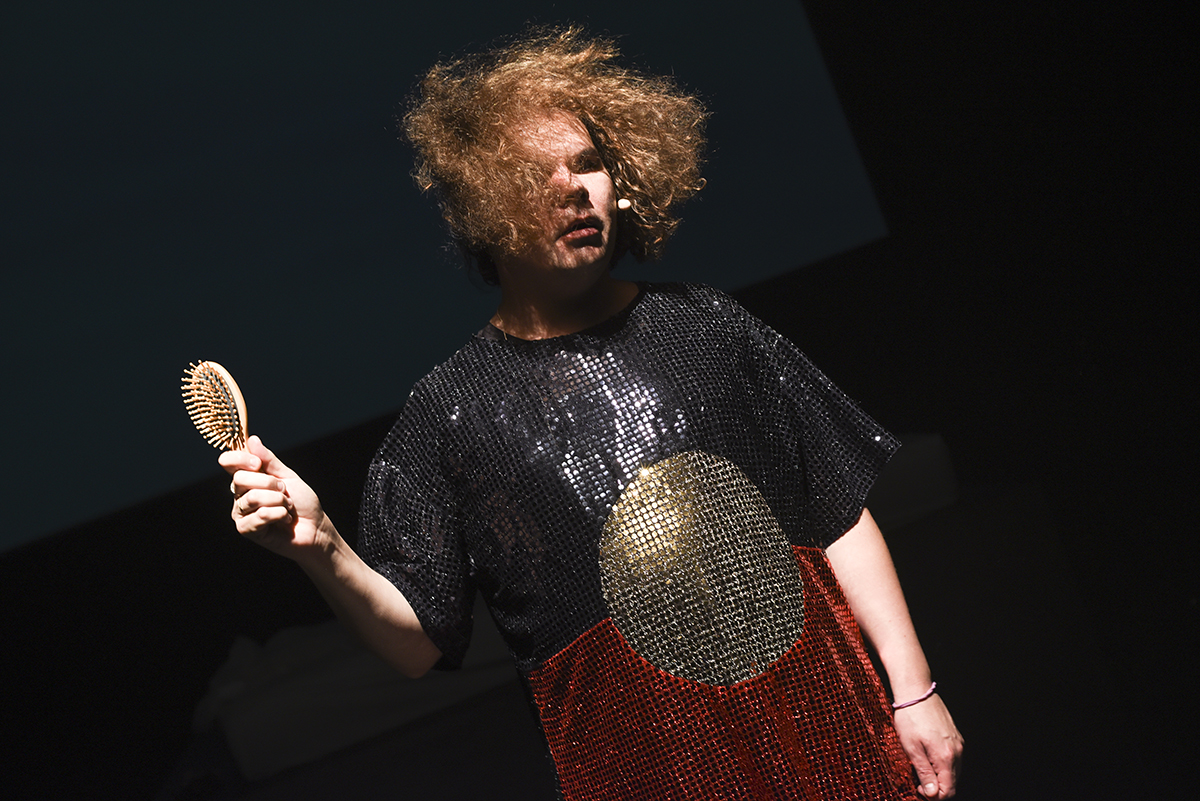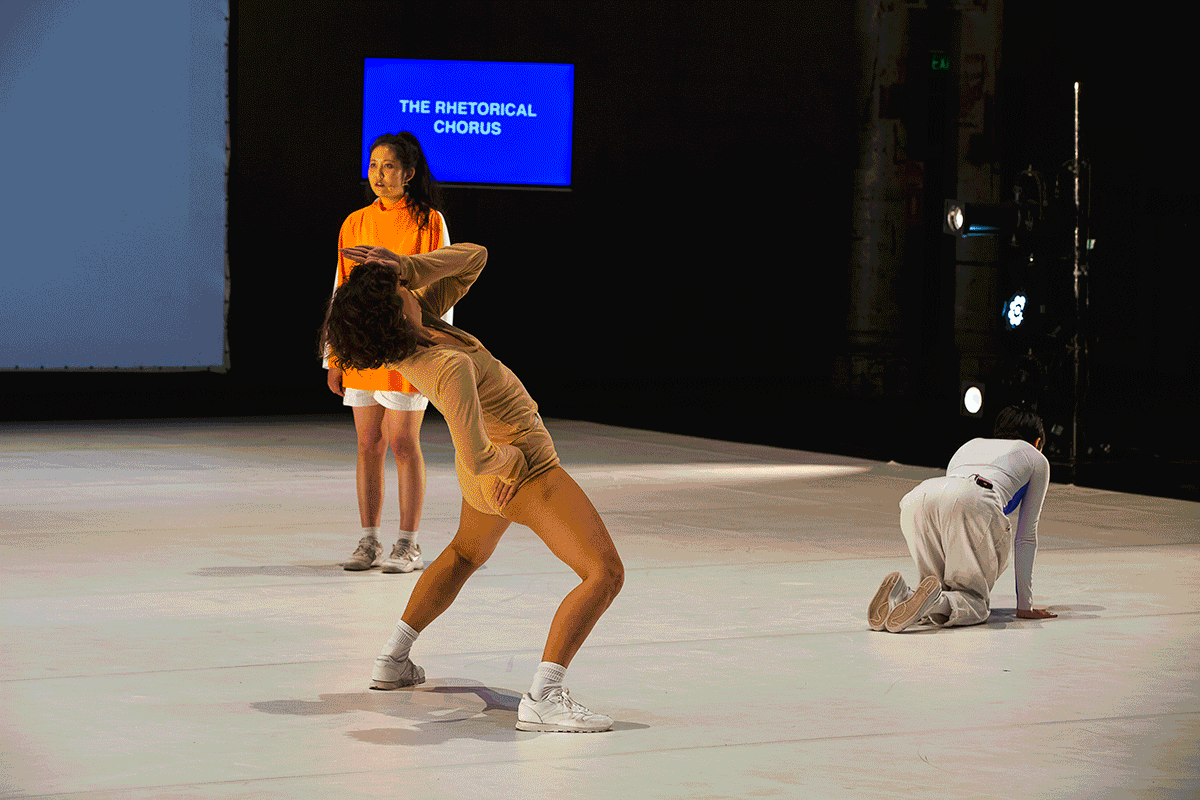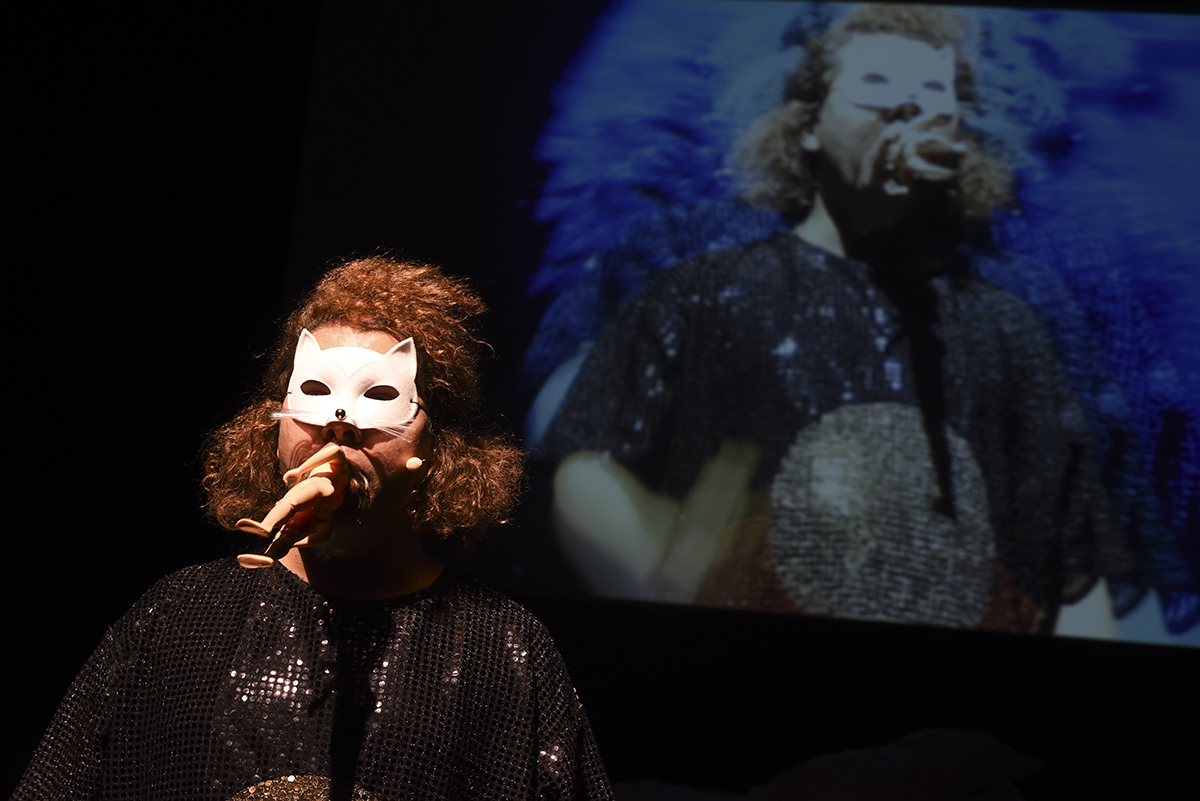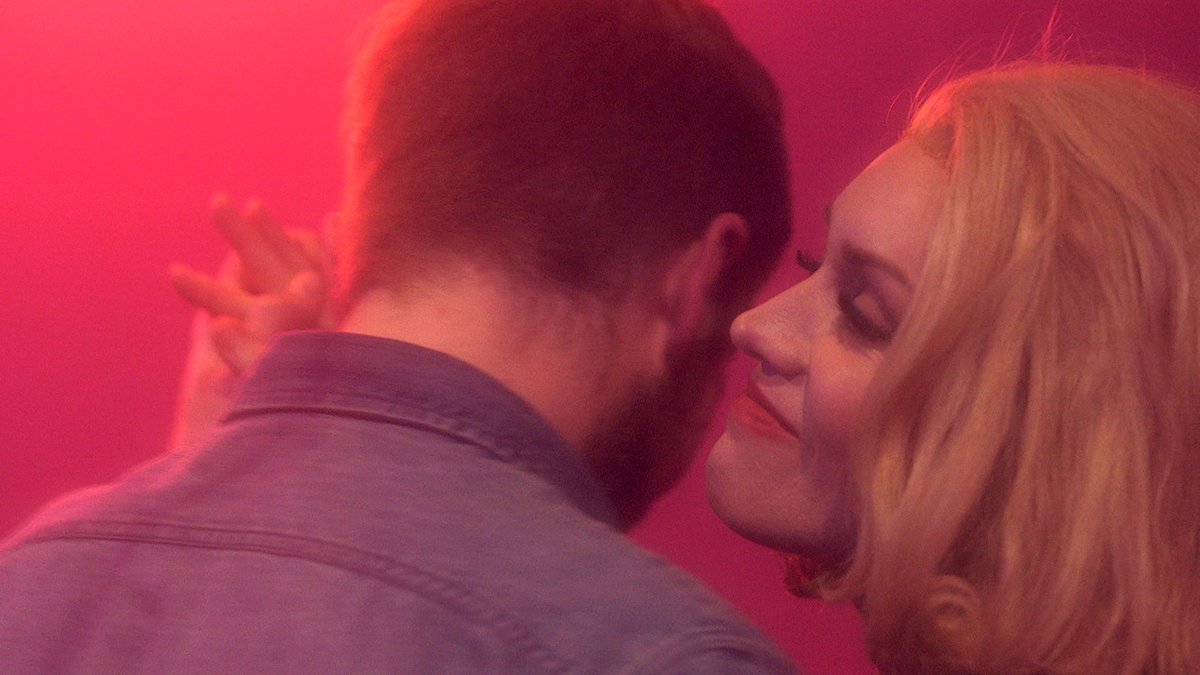
Liveworks’ ghosts of performance past
The first busy week of the Liveworks Festival of Experimental Art is over, leaving in its wake recollections of excitement and foyer debate over “experimental” as a valid descriptor, and if so, which works warranted it. The adjectives alternative, hybrid, multidisciplinary, exploratory and experimental have been deployed since the 1970s to distinguish emergent modes of performance from traditional mainstream practices. Experimental currently enjoys common usage, reinforced by some funding body criteria and doctorates in creative practice research.
If a work is to be experimental, we expect it to pose a question and come up with an answer, but a conventional play can also do that. The actual expectation is that the work challenges not only mainstream forms but prior experiments in its own field — modernist or postmodern, in contemporary performance and dance or live art — and makes new the art experience. These days the experimental and the experiential are bound together in a culture forever in love with the new, setting a high bar for any artist who lays serious claim to experimental practice. Any formal regression or standing still will be criticised, as if the artist has failed to shake off the past, their work helplessly haunted by ghosts with their own agenda.

Rhetorical Chorus, Agatha Gothe-Snape, Liveworks 2017, photos by Document Photography
Agathe Gothe-Snape, Rhetorical Chorus
We enter the vast Carriageworks Space 17 via the stairs to find ourselves suspended high above a deep stage and before a huge screen, either side of which are monitors, small at this distance, on which appear in particular the gesturing hands of American artist Lawrence Weiner, often called a conceptualist and who himself creates works of scale and believes art to be a language. Clearly, from Gothe-Snape’s program note, Weiner has been influential for her own practice. Onscreen, he speaks (unheard) and gestures (mostly in close-up). Onstage, two dancers ‘become’ his hands, left (Lizzie Thompson) and right (Brooke Stamp). In solo forays and bursts of synchronicity, the arms of each arc and shaped hands touch — the choreography’s most interesting moments residing in the upper body as much as the lower.
Renowned American singer Joan La Barbara (The Transmitter) sits to one side while The Rhetorical Chorus of six populate the floor in various permutations and vocalise with La Barbara to composer Megan Alice Clune’s gradually intensifying and increasingly layered score in Benjamin Carey’s wraparound sound design. On the screen large regular slabs of colour — a reddish orange and blue — persistently glide, rearrange themselves and ultimately fuse, in part, into a vivid purple. This geometric abstraction, reminiscent of Elsworth Kelly’s Colour Field paintings, seemed an apt pairing with Weiner’s conceptualism.
That’s the picture, but chronologically the work opens grandly, like a movie, with projected credits identifying the participating artists with letters that slip and fall, signifying the instability of language and the difficulty of linguistic representation that we associate with conceptual art (this is writ large in a video sequence within the body of the work with words falling from and returning to columns with fluid ease). We are suddenly lit and performance artist Brian Fuata (The Prologue) appears among us delivering Weiner utterances collated by Gothe-Snape. Fuata speaks the enigmatic text eloquently, but it’s his intensifying dance of arms and hands that makes “gesture become language,” of a kind. In the work’s final passage, La Barbara will sing the same words, “transmitting” them to another aesthetic plane, rendering them quite beautiful. The music reaches a new level of intensity and the hard edge of conceptualism is softened. Or, as Gothe-Snape puts it in her program note, the work’s trajectory “fragments the singular, rhetorical voice, dissolving it into a spectacle of transmission.”
Her purpose, inspired by Weiner when she met him briefly in an airport, is essentially to humanise the artist, to separate him from his artwork, or a standard view of it, by “transforming his rhetorical delivery into new forms.” She writes, “The sense of hierarchy that I had inherited and so willingly accepted — centre/periphery, old/young, male/female — dissolved. This was replaced by the reality of physical, temporal and visceral proximity: hair, bones, skin, sweat, aeroplane smell.” This hierarchy is not necessarily, however, dissolved by The Rhetorical Chorus, a work of such scale that its stage performers remained distant figures and a new form hard to discern. While the dancing was engaging from time to time, the choreography and the deployment of the chorus lacked palpable overall shaping or a sense of collective being — heard in the singing but not otherwise experienced. The middle of the work felt increasingly amorphous, improvisational and distended. I’ve been told that in subsequent performances, the work’s sequence durations, which are directly controlled by Gothe-Snape, were shortened, but this would address little of the work’s spatial and focal problems; a work of this theatrical scale demands a stronger directorial and choreographic vision.
As to its standing in a festival of exploratory art, Rhetorical Chorus is, in terms of its staging and theatricality, in the lineage of what was once American experimental performance, from Cage and Cunningham to Glass and Wilson and Robert Ashley — with whom Joan La Barbara worked — and the image-makers of American contemporary performance, like Mabou Mines. Consequently, Rhetorical Chorus felt familiar. Though the work failed to surprise, I was intrigued by its subject, Weiner, sadly minus the promised “bones, skin, sweat,” and what little I could grasp of him; by the alchemical transformation of rhetoric into song; and by an enduring, confounding, uncommunicative distrust of language. Weiner is still alive, but the ghost of his cool project is no less present, however warmed up by Gothe-Snape. That said, I admire the artist’s ambition — works of scale in contemporary performance are, sadly, rare these days. I thought her staging striking, although overblown (including glossy cinematic framing). I relished the superb singing from La Barbara (why wasn’t her presence trumpeted about Sydney?) and the Chorus and in particular the magnificent mutation of Brian Fuata’s prologue into La Barbara’s finale. Something of Rhetorical Chorus has stayed with me, like a dream memory, a keeping and compacting of the best bits into a memorable if fragile whole, while feeling haunted by a sense of a vision that looks further back than forward.
In her “transmission” experiment, Gothe-Snape has asked if she can ‘dissolve’ the influence of a dominant artworld figure on herself, and presumably her generation, and see him as a fellow skin and bone human. In the work’s own terms, she achieves some of that, but without breaking from the constraints of a conceptualist vision (she well might not want to) and without rigorously addressing an inherited postmodern form.

Christian Thompson, Tree of Knowledge, Liveworks 2017, photo Heidrun Löhr
Christian Thompson, Tree of Knowledge
Tree of Knowledge commences in the dark with a growled, quickfire voiceover, an epic litany of words attached to “Aboriginal” — “black Aboriginal, gay Aboriginal, Nicole Kidman Aboriginal, pussy Aboriginal” and on and on. A reclining Christian Thompson is a barely discernable silhouette in the performance space. On the opening night, a spotlit white Auslan interpreter (Neil Phipps) gestures the words with a brilliant dance of hands, arms and facial expressiveness that gave the stream of utterances added lyricism, heft and humour.
Christian Thompson onstage and off is funny. His remarkable body of photographic and video works too are laced with wit and irony, but there’s an essential seriousness allied with pristine image-making. But in Tree of Knowledge the performance is raw, the images roughly hewn, blackouts clunky, presence casual. Initially ignoring us, Thompson, in a face-obscuring, bulky hoodie, reclines on a bed, smoking and flipping over the pages of a magazine. We’re here on his terms and in his real time.
Thompson turns to a screen above him and activates in turn images from a video album of a white cat observed, a small child the artist greets, queuing for the cash register in a supermarket. He’ll consider one or two of them again. From then on the work comprises a series of discrete scenes in which Thompson peels off layers of hoodies (the designs unreadable in dim light) to reveal a glittering Aboriginal flag top; brutally brushes out his abundant hair as we hear his complex DNA delineated, not a lot of it Aboriginal it would seem; appears on screen singing gloriously in the language of his people; undresses a Boy George Barbie doll, sucks the head and spits it out. And there’s more glorious singing, again untranslated.
Tree of Knowledge is brash and elusive, funny and irritating. It recalled contemporary performance works of the 1980s and 90s that frequently left the audience to make of them what they would, which is why Thompson’s artist talk suggested a work that could give a little more, without becoming too literal, and with some force. The talk revealed that the video album reflected his life in Amsterdam when studying for his MA at DAS Arts in Theatre: an outsider, he identified with the cat which knew nothing of life outside the apartment. When a child, the Boy George doll was allowed him by his father, but not a desired black Barbie doll. When asked about the songs he’d composed, the words not translated for us in performance, Thompson said he simply preferred his listeners, and all Australians, to grow used to hearing Aboriginal languages. Point taken, but even so. Together the performance and talk added up to a more complete experience. Without surrendering his idiosyncratic presence, Thompson needs to work at reducing the distance between himself and his audience and create a form of performance that is as individual as his constantly evolving photographic and video work with its inherent sense of relentless experiment.
It was clear from the talk that Thompson felt the move to the stage and its three-dimensionality liberating. It’s not surprising then that he’ll be making a commissioned VR work over the next 12 months, which will inevitably be, he says, performative, and shot in the western Queensland landscape he grew up in, one location in a peripatetic childhood with an RAAF father.

The Second Woman, Dark Mofo 2017, still from production
Nat Randall, The Second Woman
Nat Randall’s The Second Woman looked like a real experiment. The 100 men who perform in the work over 24 hours, one after the other without rehearsal, just lines learned and instructions absorbed, are lab rats, with Randall effectively the stand-in for the cheese — the chance to perform publicly and for a $50 fee. The audience observe closely each iteration of the brief scene, aided by intense video feed close-ups, get to know the lines and the moves and look for any telling variation — aggression, apparent rule-breaking, overacting, being funny — and what it says about the men individually and collectively. The easiest assumption to make is that most of the men will run with Marty’s indifference to Virginia when it come to the subject of love, which he deflects back to her; the blunt force of the line itself is inescapable. But there is some room to move at the end: the man can choose from the available options to profess or reject love and/or perhaps even refuse the money. Or, while following the rules, possibly texture the scene with palpable affection. A very hard call in tightly constrained conditions. It’s pretty much inevitable that the men’s responses read as callous and sexist. In her Guardian review, “Stunning endurance theatre takes aim at patriarchy,” Stephanie Convery describes, in some detail, most of the men as playing to form, which is what I witnessed in a small sampling of performances.
Is The Second Woman a rigged experiment? In part, and it has to be, but there are other variables. Randall herself is an experimental subject: how will she endure over 24 hours, responding, for example to varying degrees of aggression and, representing womanhood across history, for just how long? She becomes, against the odds, a survivor, a heroic figure, however abject. And there’s the audience, wonderfully patient and observant or variously looking for laughs and too easily mocking the men, or enjoying Virginia’s abjection or her drunken collapse (which man will restrain her fall more than any other?) or relishing the moment when she dismisses Marty, or tensing for his last words.
There’s no doubt that works that fall within the field of relational aesthetics, where the public become participants or co-creators in the moment and outcomes can be unpredictable are ideal for experimentation. I hope Randall will at some time give an account of how she felt the men and the audiences for The Second Woman performed, what the experiment revealed of herself and how it might shape future work.
The ghost of performances past in The Second Woman, resides in Randall’s source, a stage play within a 1977 film written by a male director, John Cassavettes, featuring his wife and collaborator Gena Rowlands, whose remarkably ambivalent smile (which can turn feral or hilarious in an instant) Randall expertly reproduces, especially in exquisite close-up. Postmodern theatre and performance works have mostly tackled familiar classics, making for public dialogue about legacy and hegemony. Few in The Second Woman audience would know the film or the traumatising stage slap which is pivotal to this scene and the whole film, wisely not retained in Randall’s edited version. But for those of us who do know the film, The Second Woman conjures briefly the spirit of the original, but, understandably, with little but a hint of its complexity — felt here in that smile, the falling down and the messy mix of abjection and assertion. I was agreeably spooked by Nat Randall’s dreamlike condensation of a scene from a film that ever haunts me. Randall looks back to the past with little to say about Opening Night, doubtless not her aim, but deploys it to conduct a telling experiment, which might not reveal much more than we already know about male behaviour, but, like any good experiment, in testing volunteers, audience and the artist herself The Second Woman opens up myriad possibilities for performances to come.
You can read an extended review of The Second Woman when it appeared in Dark Mofo in Hobart in June this year, and an interview with Nat Randall.
–
Performance Space, Liveworks Festival of Experimental Art: Rhetorical Chorus, lead artist Agatha Gothe-Snape, 19-22 Oct; Tree of Knowledge, artist, performer Christian Thompson, 19-22 Oct; The Second Woman, concept, performer, Nat Randall, script, direction Anna Breckon, Nat Randall, 20-21 Oct; Carriageworks, Sydney
Top image credit: Christian Thompson, Tree of Knowledge, Liveworks 2017, photo Heidrun Löhr






